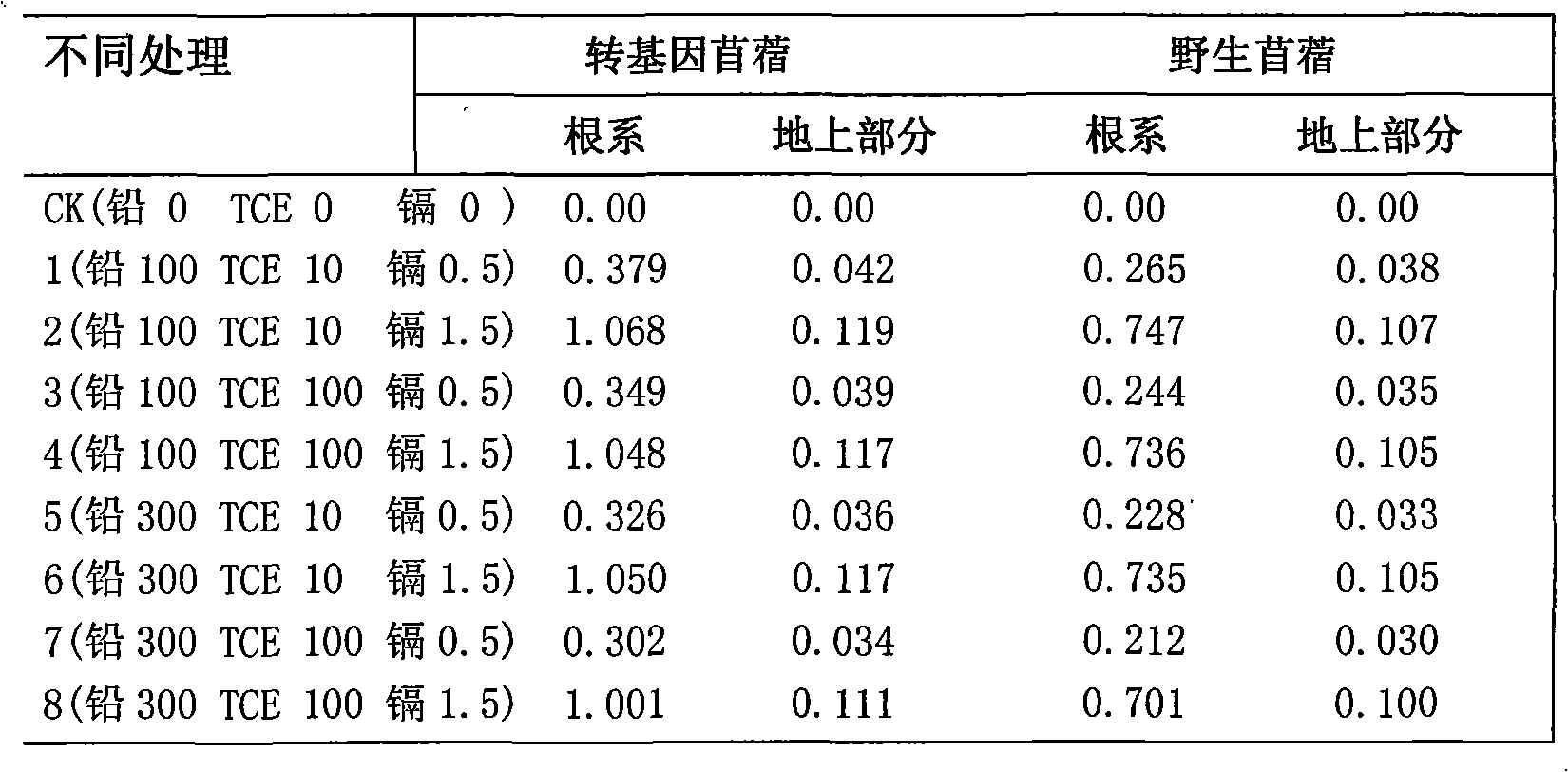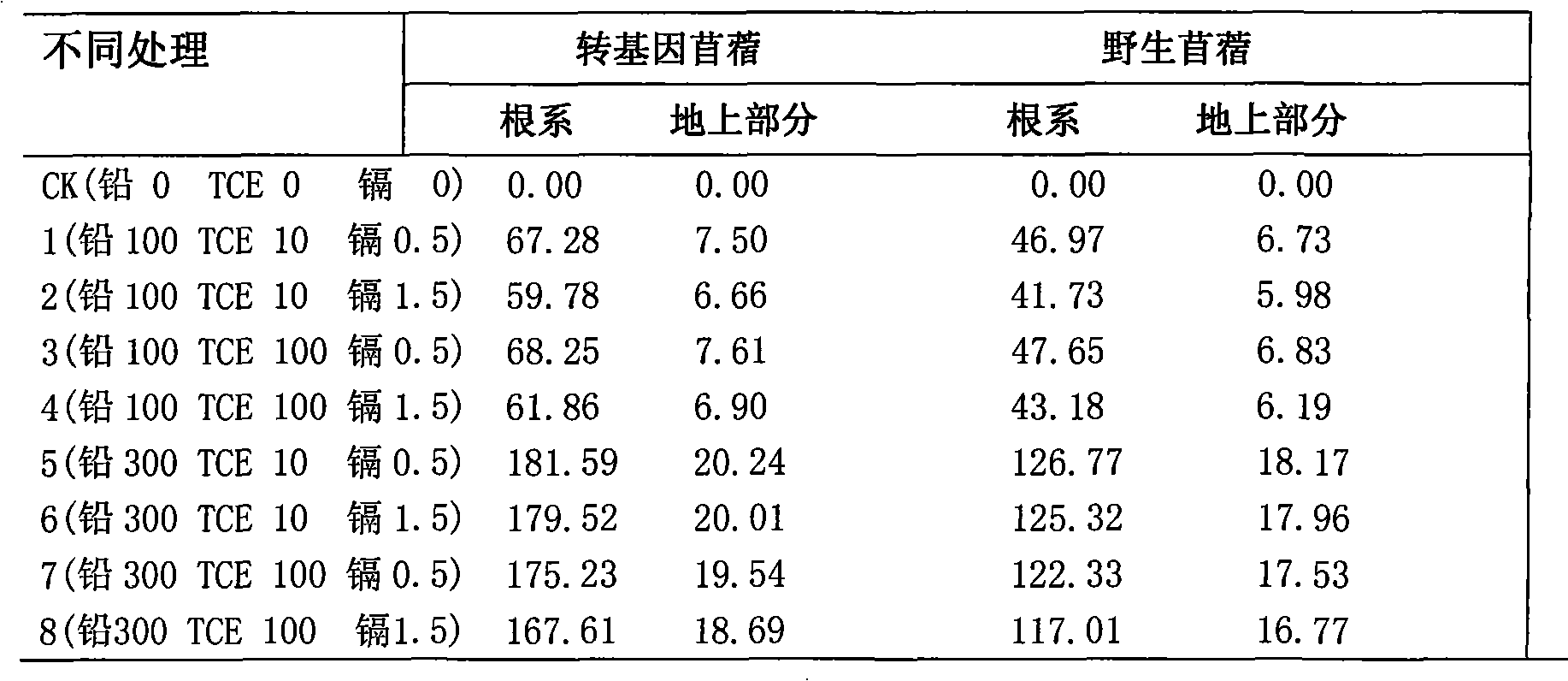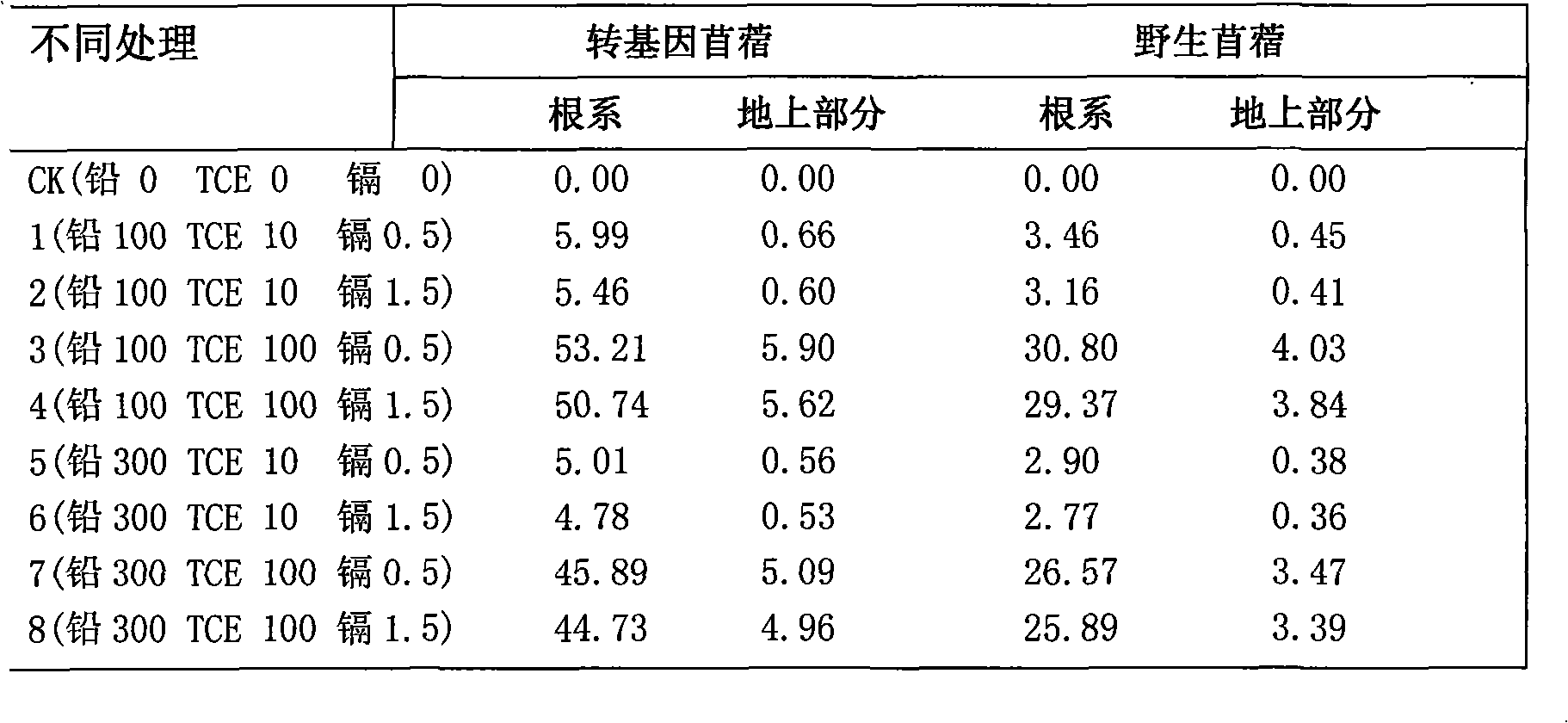Method for repairing heavy metal and organic compound contaminated soil using transgenic plant
A technology of transgenic plants and compound pollution, which is applied in the field of heavy metal and organic compound pollution soil remediation, and can solve the problem of arduous task of remediation of compound pollution.
- Summary
- Abstract
- Description
- Claims
- Application Information
AI Technical Summary
Problems solved by technology
Method used
Image
Examples
Embodiment 1
[0036] Construction and transformation of the plant binary expression vector of embodiment 1 Agrobacterium
[0037] The human-derived cytochrome P450 2 E1 gene and the γ-glutamylcysteine synthetase (γ-ECS) gene derived from Escherichia coli were digested with restriction endonucleases BamH1 and Sac1, and connected to the plant The binary transformation vector pCAMBIA2301G, and the obtained recombinant expression vector was named pCAMBIA2301G-p450-ECS.
[0038] The recombinant expression vector pCAMBIA2301G-p450-ECS was transformed into Agrobacterium tumefaciens strain LBA4404 by electroporation.
Embodiment 2
[0039] Embodiment 2 plant transformation
[0040] The recombinant expression vector pCAMBIA2301G-p450-ECS was transformed into the leaves of alfalfa by Agrobacterium-mediated leaf disk transformation method.
[0041] Centrifuge the Agrobacterium culture medium with pCAMBIA2301G-p450-ECS plasmid cultivated overnight, suspend the bacteria in 10ml of 0.15mol / L NaCL, collect the bacteria by centrifugation, and resuspend in 1ml of 20mmol / L CaCL 2 Suspend the solution, cut alfalfa leaves into small pieces of 0.5X0.5cm, soak them in the bacterial solution containing the pCAMBIA2301G-p450-ECS plasmid for 20min, blot the excess bacterial solution with filter paper, and place it on MS medium for co-cultivation 3 days, then transfer to the screening medium (MS+0.5mg / L6-BA+0.5mg / L 2,4-D+20mg / L Kanamycin+300mg / L Cefixime) containing kanamycin for preliminary screening . When the bud grows to about 1 cm, the leaf disk of the long bud is transferred to the rooting medium (MS+70mg / LKanamyci...
Embodiment 3
[0042] Example 3 Remediation experiment of transgenic alfalfa to cadmium, lead-TCE compound polluted soil
[0043] First, the heavy metals cadmium and lead were dissolved in their inorganic salt solution (CdCl 2 5H2O, PbCl 2 , analytically pure) was uniformly applied to the soil, and two high and low treatment concentrations were set for cadmium, lead and TCE respectively (the cadmium was: 0.5, 1.5 mg·kg -1 , Lead: 100, 300mg·kg -1 , TCE is 10, 100mg·kg -1 ), using L2 3 Orthogonal design, and the following controls were set up: (1) non-pollutant soil planted with transgenic alfalfa (2) polluted soil planted with wild-type alfalfa, with 3 replicates for each treatment.
[0044] The test took the following steps to mix TCE with the test soil:
[0045] ① For each concentration treatment, first dissolve the TCE required for the test with an appropriate amount of acetone, and then add it to the soil that is 1 / 10 of the total amount of soil required for the test design, and sti...
PUM
 Login to View More
Login to View More Abstract
Description
Claims
Application Information
 Login to View More
Login to View More - R&D
- Intellectual Property
- Life Sciences
- Materials
- Tech Scout
- Unparalleled Data Quality
- Higher Quality Content
- 60% Fewer Hallucinations
Browse by: Latest US Patents, China's latest patents, Technical Efficacy Thesaurus, Application Domain, Technology Topic, Popular Technical Reports.
© 2025 PatSnap. All rights reserved.Legal|Privacy policy|Modern Slavery Act Transparency Statement|Sitemap|About US| Contact US: help@patsnap.com



